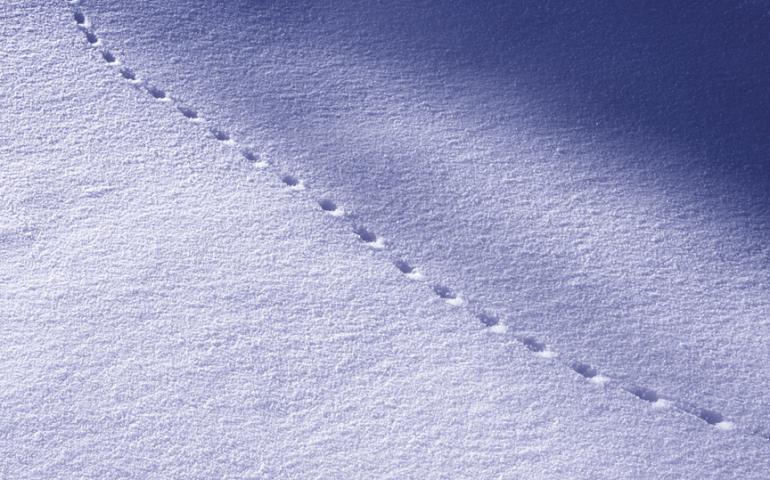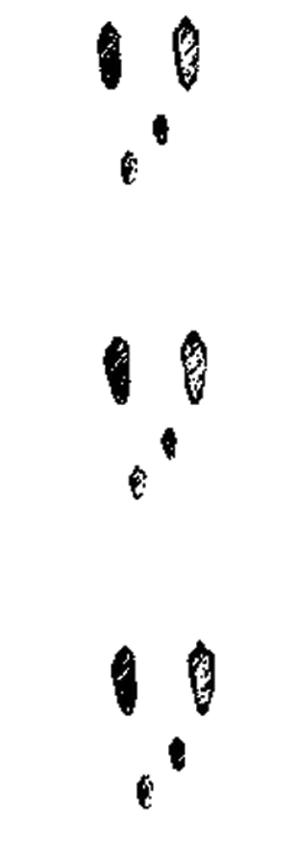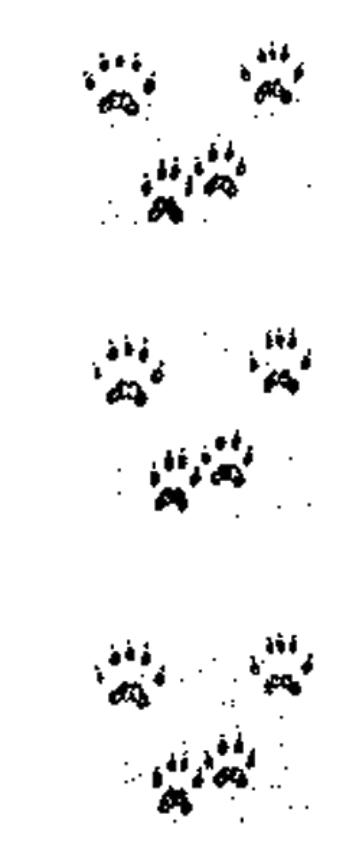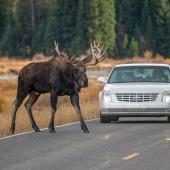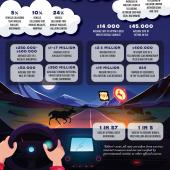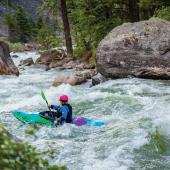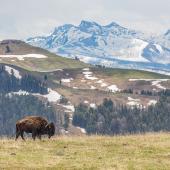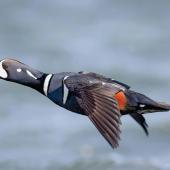Making Tracks
Identifying animals in the snow.
Once the snow falls, there’s no better time than winter for “reading sign.” Whether snowshoeing, cross-country skiing, or surveying the landscape from a chairlift, picking out animal tracks and trails can enhance any outdoor experience.
Tracking is more than identifying individual footprints. Other clues can be much more helpful in identifying “who passed here.” In fact, under loose snow conditions, it can be difficult to identify an individual footprint.
Upon seeing tracks in snow, first note the overall track pattern. Animals have a variety of gaits often related to their speed of travel, the most common of which results in an energy-efficient traveling or “walking” pattern. Patterns can help immediately isolate the group, or family, possibilities. Once you identify a pattern, look at the stride (length) and straddle (width) to get a good idea of the overall size of the animal. By now, you’re often very close to identifying the species.
Here are some common tracks to look for around southwest Montana:
Rabbits
All rabbit family members have the same track pattern: two large, evenly spaced prints that straddle a centerline, followed by two prints that are almost in line but are slightly offset; their gait pattern ends up resembling a gallop. If you’re at a high elevation and near a forest, you can be confident that you’re looking at the track of a snowshoe hare.
Red Squirrels
The red squirrel is another small mammal that also has a galloping gait. Squirrels often leave a very symmetrical pattern of all four feet, and needless to say, frequently go from tree to tree.
Weasels
Weasel tracks are very common. Under most snow conditions, they’ll leave a pattern of two tracks, close together, at even intervals. Weasels bound through deep snow, and the rear feet land in exactly the same spot that the front feet just vacated.
In the Rockies, the tracks of the weasel (there are several similar species and are often called ermine when they’re in the white winter phase) and pine marten are commonly seen. Both leave trails that are particularly fun to follow. As they search for prey, they seem to wander randomly, and often dive directly into the snow, leaving a tunnel, only to emerge elsewhere. As voracious predators, they are almost constantly hunting and leave a trademark wandering trail that may loop back on itself.
Other Animals
Animals that leave a diagonal pattern include the predators like dog (fox, coyote, wolf) and cat (bobcat, lynx, cougar) family members, but also big prey species like deer and elk. With a little observation, you’ll see that the hind foot often overlaps the front.
Finally, consider that wide-bodied and relatively slow-moving mammals pace. With a lot of variation in speed, describing this actual pattern is more difficult, but it includes bears, raccoons, skunks, and beavers.
Whatever your form of outdoor recreation, watch for tracks. Learn by watching your dog, or those kitty prints on the hood of your car. Note variation between gaits and individual tracks, and sharpen your total awareness. Take a look at the pattern and size of the trails of your local wildlife in a field guide, watch for them in the snow, and you’ll notice them forever.
For additional information, check out Peterson Field Guide to Animal Tracks, now in its third edition, by Olaus J. Murie and Mark Elbroch. This book is a classic and should be in every outdoor person’s kit.
Ken Sinay is the director of Yellowstone Safari Company (yellowstonesafari.com) and has worked as a hunting guide for 16 years for Wilderness Connections (wildcon.com), an outfitter located near Gardiner.


